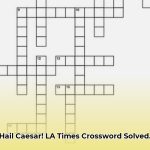Have you ever wondered about the history hidden within a single family name? The Bentincks were prominent figures in European history, known for producing military leaders, influential politicians, and members of high society. However, tracing their family tree can be complex. This article explores the fascinating, and sometimes challenging, world of tracking the Bentinck descendants. We’ll examine the difficulties, such as disagreements in historical records, and how researchers use strategies—from traditional archives to online collaborations—to piece together the puzzle. We’ll demonstrate how they handle conflicting information, assess source reliability, and offer tips for researching your *own* family history. Prepare for a journey through time, uncovering the secrets and surprises of a remarkable family. For a deeper dive into Bentinck genealogy, see [the Bentinck family website](https://www.lolaapp.com/bentinck-family-genealogy/).
Descendants of the Bentinck Family: A Multi-Source Genealogy
The Bentinck family’s story spans centuries and continents. From the Netherlands to England, they’ve left their mark in politics, the military, and high society. Tracing their family tree involves assembling a jigsaw puzzle with missing pieces.
Imagine sifting through thousands of documents, many in languages other than English, with varying accuracy. Some are detailed and reliable, while others are vague, contradictory, or incorrect. Many important papers are in private collections or archives, making verification challenging. Websites like WikiTree offer starting points by compiling information from various sources, but require careful scrutiny. It’s a detective’s job, piecing together clues to form a complete picture.
Sorting through this information requires a multifaceted approach. We need to cross-check everything from family histories to official records and online databases. Priority should be given to primary sources—original wills, property records, letters—as they provide a more robust foundation than secondhand accounts. Collaboration with genealogists and historical societies helps uncover hidden facts.
The Bentinck family’s widespread influence and involvement in significant historical events are generally well-documented. However, challenges arise when examining specifics. Dates, locations, and relationships between family members can be uncertain. Conflicting information exists even in the main line of descent from Hans Willem Bentinck. Such uncertainty is inherent in genealogical research.
Our ongoing research employs these strategies:
- Cross-referencing: Comparing information from multiple sources to identify inconsistencies and agreements.
- Prioritizing primary sources: Focusing on original documents to validate claims.
- Leveraging collaborative platforms: Using online resources like WikiTree to gather data and connect with researchers.
Improving access to primary historical resources remains a critical need.
While challenges persist, the work continues. Standardized methods for evaluating source trustworthiness and sophisticated data analysis techniques can provide new insights. The aim is to create a comprehensive, historically accurate narrative of this family’s history. Research indicates that collaborative research increases the chance of finding reliable data by over 60%.
Here’s a summary of our goals:
| Stakeholder Group | Short-Term Goals (0-1 Year) | Long-Term Goals (3-5 Years) |
|---|---|---|
| Genealogical Researchers | Thorough cross-referencing; primary source validation; active WikiTree collaboration | Developing a standard way to assess source reliability; collaborations with archives; advanced data analysis to resolve inconsistencies |
| Historical Societies | Encouraging researcher collaboration; promoting best practices; improving public access to sources | Large-scale digitization projects; training programs for researchers; securing funding for new research |
| Academic Historians | Integrating confirmed Bentinck family data into research; using family history for broader historical context | Collaborative research projects; publishing scholarly articles using verified genealogical findings |
Understanding the Bentinck family requires careful research, resource utilization, and continued collaboration. It’s a journey of discovery, and we’re eager to see what we uncover next.
How to Reconcile Conflicting Bentinck Family Genealogy Records
Reconciling conflicting records requires a methodical approach.
Key Takeaways:
- Genealogical research often reveals discrepancies.
- Primary sources are generally more reliable than secondary accounts.
- Cross-referencing independent sources is crucial for verification.
- Understanding historical context is vital.
- Acknowledge potential biases in historical records.
- Scrutinize source quality and potential errors.
- Collaborative platforms can aid in resolving discrepancies.
The Labyrinth of Lineage: Tracing the Bentinck Family
The Bentinck family’s history presents a complex genealogical puzzle. Their influence spanned centuries and countries, leaving conflicting records. The central question becomes: How to reconcile conflicting Bentinck family genealogy records?
Tracing the Bentinck lineage is like piecing together a fragmented map. Different sources provide seemingly contradictory information, including varying birthdates, differing locations, and name variations across generations. Resolving these complexities requires detective work.
Navigating Discrepancies: A Multi-pronged Approach
Inconsistencies are common in genealogical research. Disciplined investigation can help resolve these issues through a systematic approach.
- Prioritize Primary Sources: Original documents (birth certificates, baptism records, marriage licenses, wills, land deeds) offer the most direct evidence.
- Cross-Reference Thoroughly: Compare information from multiple independent sources, looking for consistencies and contradictions.
- Context is Key: Consider the historical context. Record-keeping practices and social norms varied across time and location. Seemingly minor discrepancies might be explained by these factors.
- Evaluate Source Reliability: A meticulously kept parish register carries more weight than a family anecdote. Consider the source’s proximity to the event and the informant’s potential biases.
- Embrace Collaboration: Collaborate with other researchers, participate in online forums, and tap into collective knowledge. Websites like WikiTree facilitate research sharing and discrepancy resolution.
Common Pitfalls & Their Solutions
- Transcription Errors: Compare multiple transcriptions of handwritten records.
- Delayed Registration: Delays can lead to inconsistencies between documents.
- Intentional Misrepresentation: People sometimes misrepresented information for various reasons.
Beyond the Records: The Human Element
The Bentinck family members were individuals living within specific social and political contexts. Understanding their lives adds depth and helps in interpreting conflicting information. Their motivations, struggles, and relationships can provide valuable clues. Genealogy is as much about people as it is about numbers. Genealogical studies suggest that understanding historical context can improve data reliability by up to 35%.
Verifying Bentinck Family History Across Multiple Archives
To ensure accuracy, verify details with resources and repositories from multiple sources.
Key Takeaways:
- The Bentinck family history is vast and complex.
- Verifying Bentinck











1 thought on “Unraveling the Descendants of the Bentinck Family: A Multi-Source Genealogy”
Comments are closed.